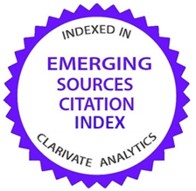POLICÍA NACIONAL DE COLOMBIA
Envíos
Lista de comprobación para la preparación de envíos
Todos los envíos deben cumplir los siguientes requisitos.
- El envío no ha sido publicado previamente ni se ha sometido a consideración por ninguna otra revista (o se ha proporcionado una explicación al respecto en los Comentarios al editor/a).
- Siempre que sea posible, se proporcionan direcciones URL para las referencias.
- El texto tiene interlineado sencillo; 12 puntos de tamaño de fuente; se utiliza cursiva en lugar de subrayado (excepto en las direcciones URL); y todas las ilustraciones, figuras y tablas se encuentran colocadas en los lugares del texto apropiados, en vez de al final.
- El texto se adhiere a los requisitos estilísticos y bibliográficos resumidos en las Directrices del autor
- El archivo de envío está en formato Microsoft Word.
- Debido la cantidad de investigaciones que son postuladas a la Revista Criminalidad, no se publicarán artículos de un mismo autor en un periodo mínimo de (01) un año, es decir, posterior a (01) un volumen.
- El artículo debe estar acompañado de la declaración de originalidad firmada por los autores, en el formato establecido para ello
- Los autores deben declarar en el apartado de "método", de ser necesario, el uso de tecnologías de inteligencia artificial (IA), lo cual aparecerá en la obra publicada. De igual forma, los autores deben proporcionar una descripción detallada de cómo se utilizaron estas herramientas en el proceso de escritura de su artículo científico.
Estudios criminológicos
Esta sección presenta los artículos inéditos correspondientes a investigación, reflexión, revisión o reportes de caso de temas criminológicos, criminalísticos o de ciencias afines.
Ámbitos de policía
Esta sección presenta los artículos inéditos correspondientes a investigación, reflexión, revisión o reportes de caso de temas de policía.
Estudios estadísticos
Esta sección presenta los datos de delitos, contravenciones y otras de criminalidad en Colombia y los resultados operativos de la Policía Nacional de Colombia, de igual forma, información de importancia para los interesados en estos temas, además de estudios estadísticos dedicados a los temas del delito.
Aviso de derechos de autor/a
Licencia creative commons CC BY NC ND https://creativecommons.org/licenses/by-nc-nd/2.0/
Declaración de privacidad
La Policía Nacional, se permite informar que: en cumplimiento a lo estipulado en la Ley Estatutaria 1581 de 2012, consecuentemente con lo previsto en el Decreto 1377 de 2013, y demás normatividad legal vigente para el tratamiento de datos personales, da a conocer a todas las personas cuyos datos personales se encuentran administrados en nuestras bases de datos, que estos serán utilizados con los siguientes fines:
Adelantar los trámites y servicios que tiene a cargo, en ejercicio de sus funciones la Policía Nacional.
- Dar a conocer los servicios ofrecidos por la Policía Nacional.
- Participar en eventos organizados por la Policía Nacional.
- Invitar a eventos de participación ciudadana.
- Evaluar la calidad de los servicios ofertados por la Policía Nacional.
El uso y manejo de los mismos, se efectúa bajo estrictos estándares de responsabilidad, dentro de los cuales está el respeto al debido proceso y a la protección de la información.
En todo caso, en cualquier momento el titular de la información podrá revocar su consentimiento y ejercer su derecho a la supresión de datos personales consagrado en la Ley Estatutaria 1581 de 2012. Es importante indicar que la solicitud de supresión de información personal y la revocatoria de la autorización para el tratamiento de datos personales no procederán cuando el titular de dichos datos tenga un deber legal o contractual de permanecer en la base de datos y/o archivos de la Policía Nacional, ni mientras se encuentre vigente la relación entre el titular y la referida Institución Policial, en virtud de la cual fueron recolectados los datos.
Para mayor información consulta las Políticas de privacidad y condiciones de uso.
















